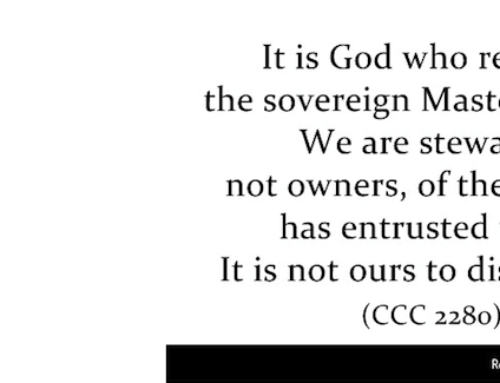Susan A. Fani
December 2008
Steven Mosher, Population Control: Real Costs, Illusory Benefits, Transaction Publishers
Matthew Connelly, Fatal Misconception: The Struggle to Control World Population, The Belknap Press of Harvard University Press
Steven W. Mosher’s book explains the tragedy of the population control movement and the need to prevent depopulation as a result of the mass conversion of the West into believing that the world is dangerously overpopulated. Matthew Connelly’s book addresses the “politics of population” by exploring the history of the movement, its coercive methods and the groups, primarily the Catholic Church, that challenged the movement’s ideas. Both men expose the terrible things done by those claiming to improve the world through population control. Both authors oppose coercive reproductive measures used to compel people to reduce fertility. Where Mosher explores the personal, economic and demographic disaster the population control movement has wrought, Connelly attempts to equate the pro-life and pro-choice factions as equally reprehensible, thus missing the lesson to be learned from the failures of the population control movement.
Mosher, the leading expert on population issues, sets the record straight about alleged overpopulation. In his well-researched book, he makes the important point that, due to decreasing death rates as a result of improved healthcare around the world, there are more people around because we are living longer. At the same time, the birth rate has steadily declined. As he points out: “Our numbers didn’t double because we suddenly started breeding like rabbits. They doubled because we stopped dying like flies. Fertility was falling…from an average of 6 children per woman in 1960 to only 2.6 by 2002.”
As a result of the brainwashing that people have undergone, what awaits society is depopulation, which will result in many older people being supported by increasingly fewer young people. And the baby boomers and their children will have no one to blame but themselves. Women are putting off marriage and children and in many Western countries the replacement rate of 2.1 children per woman is not being met. The fertility rates are even going down in many developing countries, according to research by the United Nations. With people living longer and fewer children being born to take care of their elders, a preventable disaster is coming.
Whereas the developed world chose to be largely barren, the developing world had it forced upon them. “The United States and other developed countries consciously set out in the 1960s to engineer a radical decline in Third World fertility. Weak nations, dependent…for financial aid, military security, or access to markets, were bullied or suborned into mandating anti-natal measures.” Providing financial and other aid to developing countries in exchange for controlling birthrates via contraception, sterilization and abortion not only shows the dangerous priorities of the population controllers, but has also led to coercive measures by the recipient nations to insure that the aid keeps coming from the West.
The focus on preventing births also led to misappropriation of aid that would be better spent on improving healthcare for the poor. A case in point is money spent on malaria. This is a treatable disease that is devastating to those who cannot afford the medicine that could save their lives. But money that is poured into reproductive health measures dwarfs the amount spent on treatment of malaria. The United States Agency for International Development, which spends so much time and money on working with developing countries to get their citizens sterilized or on contraception, decreased its funds for malaria treatment from $50 million in 1985 to $10 million in 1994. However, over $400 million was provided in 1994 alone for “fertility reduction” programs.
Mosher points out that overpopulation has often been blamed for widespread societal ills, and those problems are considered by those in the movement as sufficient justification for pushing this agenda, at the expense of much needed basic healthcare. The population controllers have also justified their massive funding for reducing fertility by hiding behind lofty goals such as advancing women’s rights, improving the environment, and raising the standard of living for the poor. However, these claims are belied by the fact that the movement measures success by the amount of people, called acceptors, using contraceptives and sterilization with the result of fewer babies being born in developing nations. Those on the receiving end of these programs, Mosher observes, are justifiably upset that the Western world is targeting them for elimination. Many people have rebelled only to be forced to have their most basic rights violated, most notably in China and India.
Mosher’s justifiably negative view of population control measures is shared by Michael Connelly who agrees that many countries have participated in coercive population control programs instead of addressing underlying political and economic problems. Unlike Mosher, he objects to the actions of the Catholic Church, which he accuses of promoting patriarchy at the expense of the faithful. In doing so, his detailed history goes off track but he nevertheless manages to show the leading role the Church has had in promoting the sanctity of life.
While Connelly challenges the claims of the population controllers, he sympathizes with their intentions. He argues that population did seem to be growing out of control in the twentieth century and those who were concerned tried to alleviate the problem in ways that often were coercive and ultimately unnecessary. Fertility was decreasing despite the expensive programs that showed no evidence of success. He concludes that birthrates were falling because it was individual women who decided the number of children they wanted. “It is therefore the emancipation of women, not population control, that has remade humanity.” Thus, he credits education for reduced birthrates and he advocates that women and men individually should decide whether or not to have children.
An obvious objection by Connelly through his thorough documentation of the population control movement is how racist it has been. Particularly in the early and mid-twentieth century, white liberals fought for population control measures against non-white people for fear they would overwhelm the West with their numbers. In a short time span, the idea that non-whites were breeding and had to be stopped for the sake of mankind took hold. Unlike the Catholic Church, which values every human life, these zealots devalued those who did not look or act like they did. The family planning movement increasingly became coercive when the population controllers did not see the results they wanted. Connelly states, “The atmosphere of alarm, even hysteria, surrounding the population issue made coercive policies seem inevitable.”
Connelly labels as a “fatal misconception” the idea that the population controllers know the interests of the people better than they do themselves. He rightly chides them for sponsoring coercive measures, but his charge that the Catholic Church—because it is opposed to abortion—is no better, makes for a strained analogy. It is one thing to champion a reduction in the non-white population; it is quite another to champion the rights of the unborn.
He is concerned that a new wave of population control measures may be implemented in light of the fact that populations are rapidly falling. He is also worried about the effect of sex selection abortions, particularly in India and China, because they may promote patriarchy since girls are targeted for elimination. His solution to these problems is what he considers true reproductive freedom for the individual. “Those who consider themselves pro-life must eventually realize that making people breed at any price cheapens all of our lives. And those who consider themselves pro-choice would be in a stronger position if they were at the forefront in opposing all manipulative and coercive policies designed to control populations.” Connelly’s false comparisons between the Roman Catholic Church and the militant population controllers is what undermines his otherwise well-documented history of the fertility reduction movement.
Connelly fails to appreciate that the Catholic Church teaches human life is sacred and must be respected. Understanding the worth of each child of God, Pope Paul VI, in his prescient 1968 encyclical Humanae Vitae, called married people to be open to human life:
“Responsible parenthood, as we use the term here, has one further essential aspect of paramount importance. It concerns the objective moral order which was established by God, and of which a right conscience is the true interpreter. In a word, the exercise of responsible parenthood requires that husband and wife, keeping a right order of priorities, recognize their own duties toward God, themselves, their families and human society.”
What Connelly calls true reproductive freedom is just the opposite; it is the Catholic Church that points out that freedom is achieved by living in accord with God’s will. Connelly is advocating exchanging coercive population control measures for family planning as a result of decisions made by individuals. However, those decisions can only be moral if the choices people make are in accord with God’s law. Roman Catholics are instructed to have properly formed consciences to enable them to make these vital decisions.
In summary, Mosher’s book is an eye-opening, informative educational tool that is worth a close examination by those who want to learn what is needed to reverse the rapid decline in population. Mosher argues that the United States government must stop funding population control measures. What the West needs to focus on is reversing the demographic suicide now taking place. Connelly’s book, with its unfair and defective comparisons between population controllers and the Catholic Church, is one to skip. His inability to see that the Catholic Church is trying to help humanity and not hurt it smacks of political correctness.
Susan A. Fani is the Director of Communications for the Catholic League.






